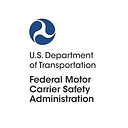It takes a high level of skill to maneuver a commercial motor vehicle (CMV) safely. These vehicles take longer to stop, make wider turns, and have bigger blind spots. Fortunately, large truck and bus drivers take the responsibility of safe driving seriously; they buckle up and put their phones down when behind the wheel, and ensure their vehicle meets safety standards.
While safety is a priority and a part of the job, there is still an alarming rise in CMV-involved roadway fatalities. Many crashes are caused by exceeding the posted speed limit or driving too fast for the conditions. Drivers continue to put themselves and others at risk despite the proof — driving at unsafe speeds is a well-documented cause of death and injury on the road.
According to the National Highway Traffic Safety Administration (NHTSA), speeding claimed 11,258 lives on America’s roadways in 2020 alone — an average of nearly 31 people each day. It was also a contributing factor in 29% of all traffic fatalities. Speeding continues to be the most frequent driver-related factor in fatal crashes for CMV drivers (7.3%) as well as passenger vehicle drivers (18.8%). It’s imperative we work together to lower these numbers, supporting the U.S. Department of Transportation’s goal of zero roadway fatalities outlined in the National Roadway Safety Strategy.
The facts speak for themselves. Safely operating CMVs and maintaining safe speeds can save lives. Whether it’s highway travel or slowing for sharp turns, it’s critical CMV drivers maintain a safe speed for themselves and others on the road.
When operating large trucks and buses, some tips to prioritize safety include:
- Always follow the speed limit: Maintain safe speeds at all times. Speeding can lead to crashes and fatalities.
- Inspect your vehicle: Ensure you conduct pre-trip safety checks, particularly for tires and brakes. This helps you control speed and your vehicle throughout your trip.
- Check the weather: Hazardous conditions like rain, sleet, or snow can greatly increase the stopping distance for CMVs. Drive at an appropriate speed to avoid the risk of a crash.
- Review your route: Be aware of work zones, detours, mountainous terrain, and road conditions to anticipate when a slower speed may be necessary.
- Reduce speed on curves and ramps: The speed limits posted on curve warning signs are intended for passenger vehicles; CMVs should reduce speed even further. Approach curves and entrance/exit ramps at a safe speed to avoid rollovers.
Speeding endangers not only the life of the driver but also others on the road. It is everyone’s responsibility to share the road safely, including maintaining a safe speed at all times. Help promote safer speeds — and saving lives — with the links below.
- Download shareable materials from FMCSA’s Safe Speed Toolkit.
- Visit FMCSA’s Safe Speed Campaign page for more resources.
- Do your part to implement the National Roadway Safety Strategy (NRSS) and Safe System Approach by taking specific actions to reduce serious injuries and deaths on our roadways.
[KF1]Link not live yet
